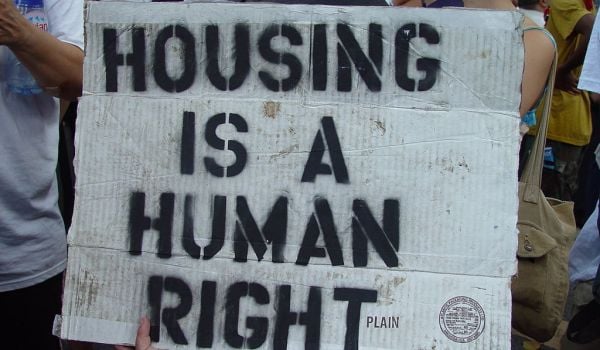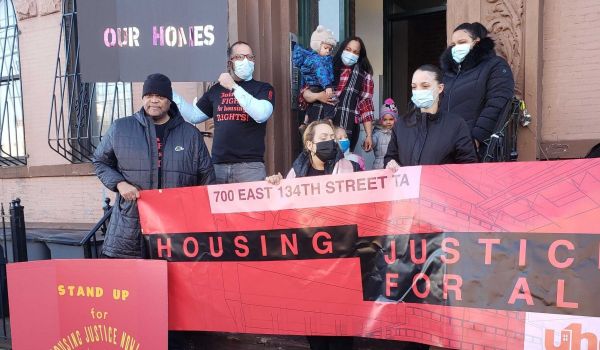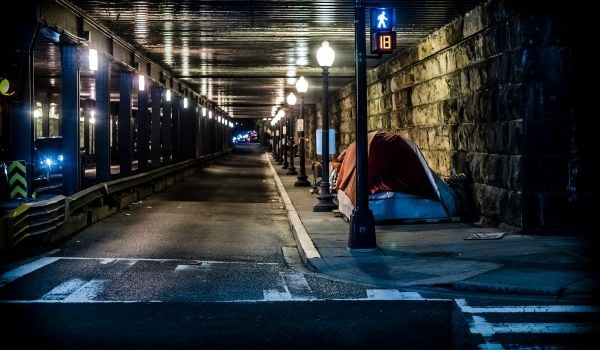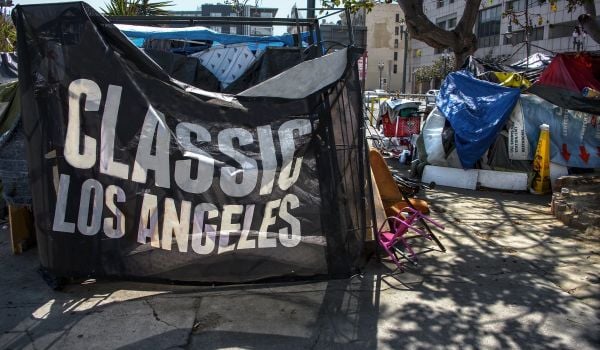On Sunday morning, London Mayor Boris Johnson’s housing policy came in for a bit of criticism from New York’s architectural establishment on Twitter. Michael Kimmelman, architecture-turned-urbanism critic at the New York Times, tweeted that Johnson is “kowtowing to developers, cutting promised affordable housing,” and then linked to a Guardian blog post about Johnson’s more aggressive use of his power to override local opposition to housing schemes.
Architect/urbanist/author John Massengale echoed Kimmelman’s concern, adding, “10 to 1 he’s been listening to our own Mayor Mike,” referring to no-longer-mayor Michael Bloomberg and his alleged coziness with developers.
How do the housing goals of Johnson, a conservative, stack up against those of New York’s great white progressive hope, newly inaugurated Mayor Bill de Blasio? Both cities are struggling with how to ease their widening affordability problems and how to grow productive urban centers in an equitable way. They’re also similar in size, desirability and economic strength, making for an easy comparison.
By any measure, Johnson has a much more expansive housing plan for London than de Blasio does for New York.
In New York, the man who ran on a “tale of two cities” message has pledged to build 50,000 new subsidized housing units across the five boroughs during his hoped-for eight years as mayor. This number is often confused with mayors’ much more widely publicized “create or preserve” housing goals — de Blasio pledged 200,000 — though this metric is more or less irrelevant, since it counts existing below-market units that are “saved” from slipping out of rent regulation or affordable housing programs. It doesn’t take into account the many more that are inevitably lost to the same forces. Even de Blasio himself, when not filtered through a press aide, is prone to confusing the two targets.
Johnson has set his sights much higher. Under his direction, the Greater London Authority is aiming for 17,000 newly built subsidized units each year for the next 10 years. Over the eight-year term of de Blasio’s 50,000-unit goal, this works out to 136,000 subsidized units — more than two-and-a-half times as many affordable apartments as de Blasio has promised.
Then there are the market-rate housing goals. Or, well, goal. Unlike London, which is aiming for 25,000 new market-rate apartments and houses each year, New York has not set a goal for overall housing stock growth outside of the relatively small subsidized sector. De Blasio could still plan to set one — he’s less than a month into his mayoral term, and he hasn’t even appointed a chief city planner yet — but given that even supposedly market-oriented Bloomberg never had a market-rate housing goal, it seems unlikely. (De Blasio does say he believes that boosting market-rate housing supply can bring down prices, but he’s not as vocal about it as he is about his affordable housing goals.)
The lack of a market-rate target could reflect a lack of consensus among New York’s political establishment — even Bloomberg’s chief city planner has cast doubt on it — that the city’s housing market acts according to the laws of classical economics.
In London, on the other hand, even the opposition Labour Party seems to agree that growing the overall housing stock, not just the portion that’s subsidized, is the key to long-term affordability. Nicky Gavron, Labour’s housing and planning spokesperson for the London Assembly, wrote earlier this month:
Boris is failing to genuinely address London’s housing crisis. Today he committed to an annual housing target that is lower than the number his own evidence base says we need. The London Plan alterations say London must build 42,000 homes a year, but his own research shows real need is actually up to 62,000.
This target is too low, but even a low target may be too much of a challenge for Boris. The Mayor has overseen a collapse in house building – numbers have been falling and in 2012/2013 there were only 18,000 new homes completed.
As a comparison, New York saw just 9,455 housing units completed in 2012, with permits issued for another 10,344. During the first decade of the millennium, New York’s housing stock grew at an annual rate of just 0.5 percent against Greater London’s 0.82 percent.
London’s housing stock has grown more than New York’s, but the uptick in housing prices suggest it hasn’t been enough to keep up with demand. From foreign oligarchs looking for safe investments to the more modest masses of Britons pouring into the jobs-rich capital since the economic downturn, the demand is torrential and Johnson’s numbers may not be enough to sate it.
But what is clear is that Johnson, despite his conservative label and some criticism from London’s left, is doing far more to solve his city’s housing crunch than either de Blasio or Bloomberg in New York. Rather than criticize Johnson’s housing policies, New York’s urbanist establishment would do well to prod de Blasio into emulating them.
The Works is made possible with the support of the Surdna Foundation.
Stephen J. Smith is a reporter based in New York. He has written about transportation, infrastructure and real estate for a variety of publications including New York Yimby, where he is currently an editor, Next City, City Lab and the New York Observer.
















